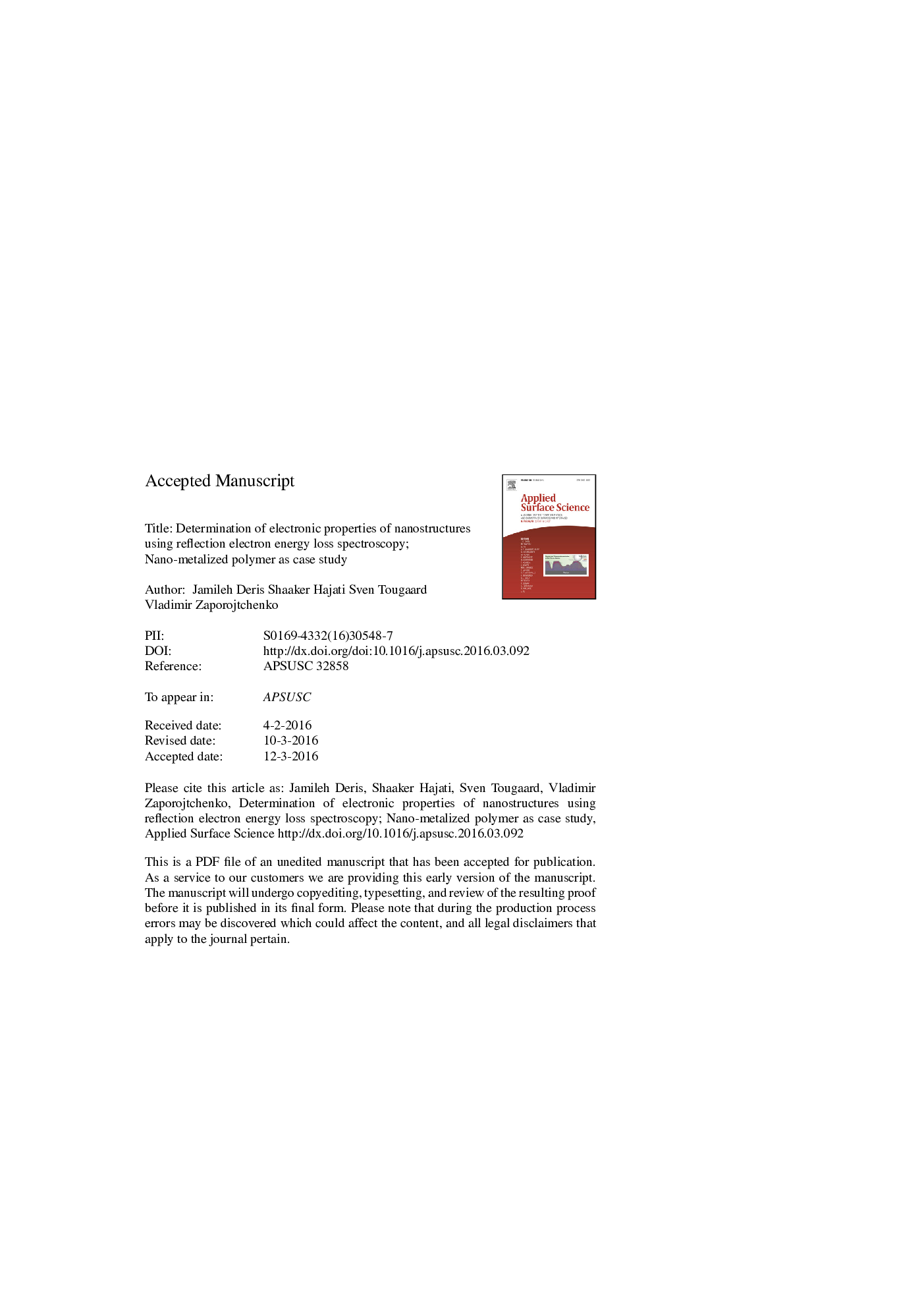| Article ID | Journal | Published Year | Pages | File Type |
|---|---|---|---|---|
| 5348749 | Applied Surface Science | 2016 | 14 Pages |
Abstract
In this work, Au was deposited with nominal effective thickness of 0.8 nm on polystyrene (PS) at room temperature. According to previous study, using XPS peak shape analysis [S. Hajati, V. Zaporojtchenko, F. Faupel, S. Tougaard, Surf. Sci. 601 (2007) 3261-3267], Au nanoparticles (Au-NPs) of sizes 5.5 nm were formed corresponding to such effective thickness (0.8 nm). Then the sample was annealed to 200 °C, which is far above the glass transition of PS. At this temperature, the Au-NPs were diffused within the depth 0.5 nm-6.5 nm as found using nondestructive XPS peak shape analysis. Electrons with primary energy 500 eV were used because the electronic properties will then be probed in utmost surface (â¼1 IMFP range of depths that is 1.8 nm for PS). By using QUEELS software, theoretical and experimental electron inelastic cross section, energy loss function, electron inelastic mean free path and surface excitation parameters were obtained for the sample. The information obtained here, does not rely on any previously known information on the sample. This means that the method, applied here, is suitable for the determination of the electronic properties of new and unknown composite nanostructures.
Related Topics
Physical Sciences and Engineering
Chemistry
Physical and Theoretical Chemistry
Authors
Jamileh Deris, Shaaker Hajati, Sven Tougaard, Vladimir Zaporojtchenko,
